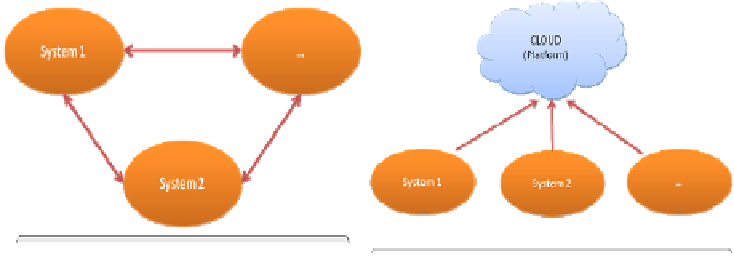Information Technology Reference
In-Depth Information
A solution based on the vertical approach for the interoperability is intrinsically
simplest because the integration of a new system/resource just implies the interfacing
with the abstract layer (2).
k(i) = k(i-1) + 1→ O(1)
n>2
(2)
In practice the vertical approach can be assured according to two different
approaches:
1)
Standards
. Solutions based on shared layers that impose resources to be described
according to a well defined set of standards. This is the simplest solution by a
technical and conceptual point of view but, unfortunately, is not always easy to be
applied in the context of complex virtual organization. This is mainly because
standards are hard to be imposed and the data/knowledge from systems can be hard to
be converged in well defined standards even considering domain-specific solutions.
2)
Open models.
Dynamic solutions based on open models (e.g. semantics). Semantic
representations guarantee the definition of local knowledge environments that can be
centrally managed without the need to share standards. Furthermore, resources could
interact among them interchanging semantic data. A completely open model is
complex to be proposed and managed. As explained in the section 4, realistic
solutions can be designed according to hybrid approaches based on core ontologies
that can be extended and/or particularized.
Fig. 3.
Horizontal (up) vs vertical (down) approach for interoperability
3.2
Business Model: Merging Migration and Virtualization
Merging migrated and virtualized resources provides a high level of flexibility respect
to both technologic and business perspectives. Migration assures a scalable
environment, the potential reduction of maintenance costs, as well as the other
advantages typical of the cloud approach.
Virtualization allows a further degree of flexibility for resources that owners
cannot migrate or do not want to migrate: resources are available into the ecosystems








